Recent Blog Posts
Sometimes
Today was a sometimes day. Yesterday Salsa Boy left and it didn't sink in. It was like he had just gone out on a boy's night or something. This evening I went out to a restaurant to get dinner alone. We had been there several times together and they were confused that I was alone. They asked me if someone was meeting me...the waitresses seemed perplexed by my lonesome self. I just shook my head, said '1' and asked where I should sit.I pulled out my dinner date (Much Ado About Nothing...Shakespeare, French, Spanish and Habermas the only thin gs I seem to be able to read slowly) and morosely picked at my dinner. And as miserable as it was to eat alone, I drew it out so I wouldn't have to go home. After I paid, one of the ladies who works there told me to wait a moment (at least that's what I think she said) and wrapped up a big sweet potato for me in tin foil to take home.
I have no idea what I'm going to do with the sweet potato, except maybe eat it as part of my dinner tomorrow. It was a completely random thing to give me. And yet, the stupid sweet potato cheered me up, put a smile on my face and helped pull me out of my funk. I'm still lonely but people are looking out for me and tomorrow will be another day. Tomorrow, I will not let my plans consist of cleaning my bathroom and reading. I'm letting myself be dragged to an open mic night. I've ranted enough about this sort of thing here. With a couple of drinks, I won't mind the off key notes and the company will be good.
One month (minus one)
Actually, it was a month yesterday, but I decided on a whim to take an Internet fast for a day. It was great. I know I am addicted to the Internet, to the constant stream of information (or no-information, as my 50 times a day e-mail checking habit can attest to) available instantly. It numbs me and it dumbs me and makes me not like myself a little bit. So, I kept it off. No morning with coffee and the computer, no "I am sure someone important has contacted me on a Saturday with something that cannot wait in the last five minutes since I checked my e-mail before." No feeling like I wasted my day, even though I did not do a lot. My niece and her boyfriend came over for lunch. We ate, I continued to recover from my latest illness, watched NFL playoffs with my brother who also stopped by, made mung bean stew. Took the dog for a walk in the park. Did not check my e-mail once. When I popped it on this morning, nothing pressing had gone unattended by me, no one was dead because I did not respond to their Facebook message. It's funny how this could become a problem. But, it has.
Several years ago, a man playing Starcraft, an enormously popular online game in South Korea, died after playing the game for over 50 hours straight. And I thought I had a problem. While I like to take breaks from all that is important on Digg and Fark from time to time, I still find myself separating from reality. This becomes reality, this screen. The brain cannot tell the difference. Almost like the Japanime "Serial Experiments: Lain" only not animated and without a catchy theme song.
Unlike in 2005, I will have a computer in South Korea from the onset. Instead of racking up toll charges from international calls, I'll have Skype. A good thing. But, if and when I get the inevitable "you're 8,000 miles from home" blues, like Lain, it can be very easy to throw myself into "The Wired." You can't get hurt in there. At least 2005 had the cold, cold walks to the P.C. Bang down the street. At least that got me out of the apartment (and despite South Korea's incredibly wired world, P.C. Rooms are still ubiquitous. The Internet Cafe is a cultural thing, not just a thing of convenience). But, what a boring year it would be if most of my memories revolved around checking Facebook.
—John Dunphy
Destination: Pagyesa (Daegu)
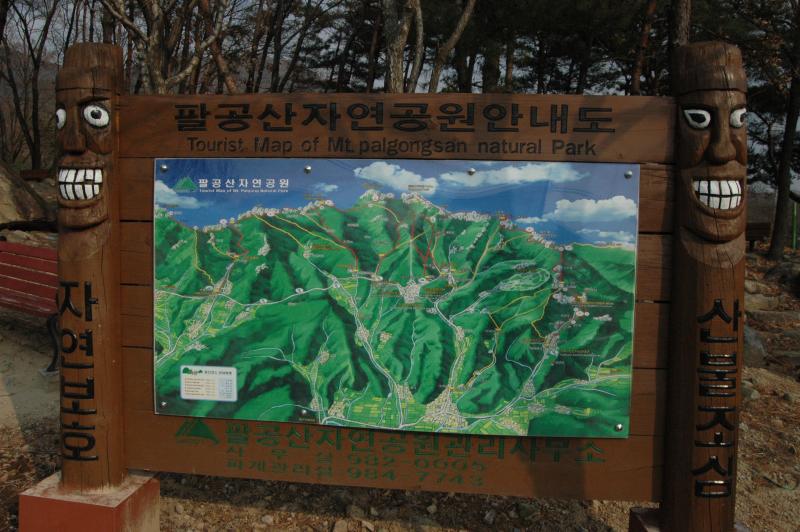
As part of Palgongsan Provincial Park, Pagyesa is one of many destinations spread out across the mountain. First built in 804 by a priest named Simji (not Simba, you Lion King obsessed reader), it was renovated in 1605 by priest Gyegwan and 1695 by priest Hyeoneung. With several Daegu Tangible Cultural Properties, 17 buildings and a lot of karma, it's worth the uphill trek to reach. Just don't bring a backpack full of stuff with you - even after the bus reaches the parking lot it's a hike of 1.1 kilometers. Uphill.
It's worth mentioning that this particular temple isn't listed in the Lonely Planet - it's overshadowed by the more popular Haeinsa, which holds the Tripitaka Koreana (the 81,340 woodblock scriptures that have survived since the 15th century). Who wants to the same places everyone does? You're welcome :)

I'm not quite sure why the corner of the structure holding the map was interesting... but I like the picture all the same.

The front gate - walk or drive your private car up all the way to the top.
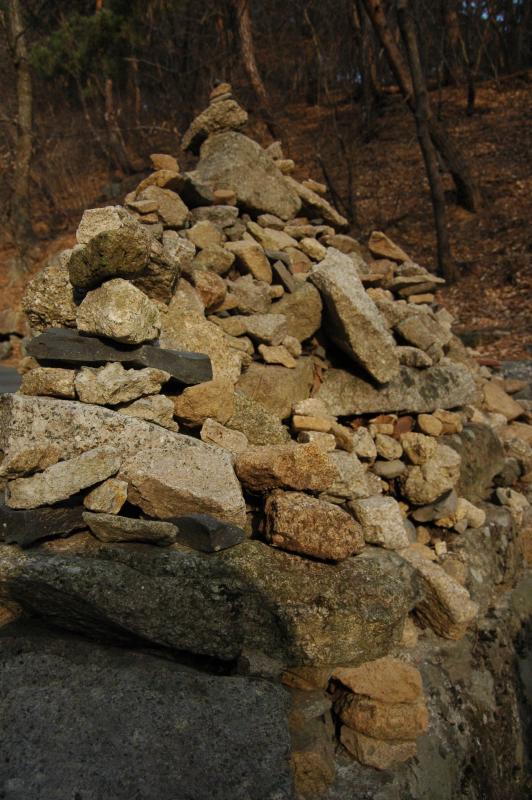
A Buddhist rock pile (called ovoo in Indian Buddhism), which is reminiscent of Korea's shamanistic past and the belief that rocks have souls.
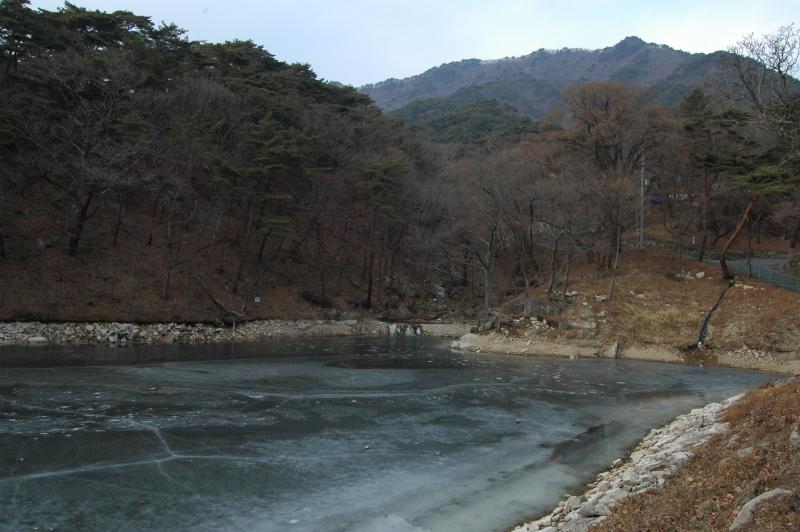
We were still walking towards the entrance when we discovered the pond was completely iced over.
For those who expect Buddhist temples to be collections of ancient buildings and wizard-like monks able to levitate, you're in for a surprise here:
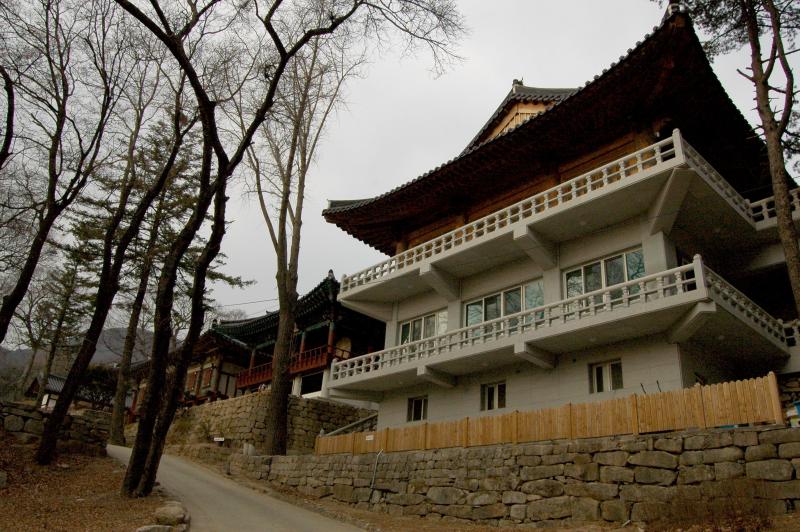
Some rather modern-looking buildings greet you after your trek uphill. The largest building is called 설법전, and was one of the few that featured a more modern construction.
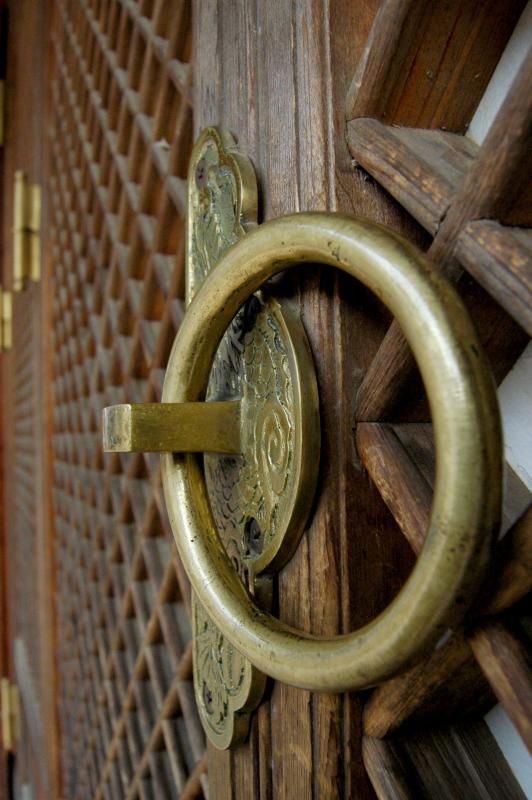
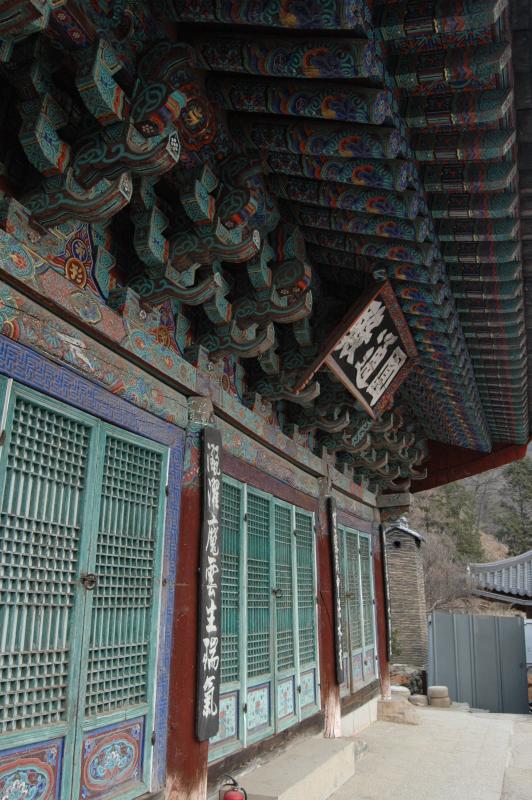
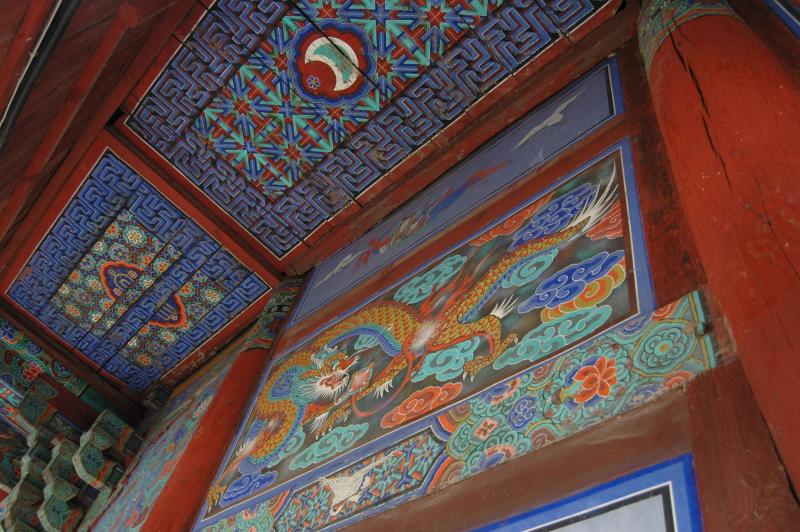
원통전 - also known as the main hall in the center of the area.
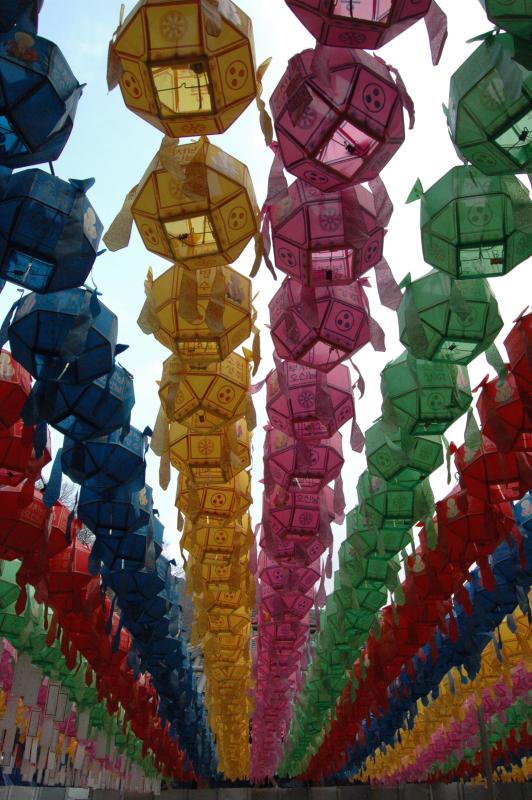
Although you most commonly see lanterns during Buddha's Birthday (April or May, depending on the lunar calendar), there's no reason to take them down once they're up. Strung over the area in front of the main hall, they might provide some shade in the summertime - for now, they're simply pretty to look at.

An interesting historical sidenote. The building is named Giyeonggak (기영각), and essentially means a pavilion (gak) to pray (gi) for King Yeongjo (yeong). It was constructed in 1696 by priest Hyeoneung after King Sukjong asked the priest to pray for the birth of a son to succeed him. While the woman that presumably did most of the work isn't mentioned, Yeongjo's birth was supposedly the result of the praying. Although the building has been renovated twice recently (1974 and 1983), the style is typical of the late Joseon Dynasty period during which it was built.
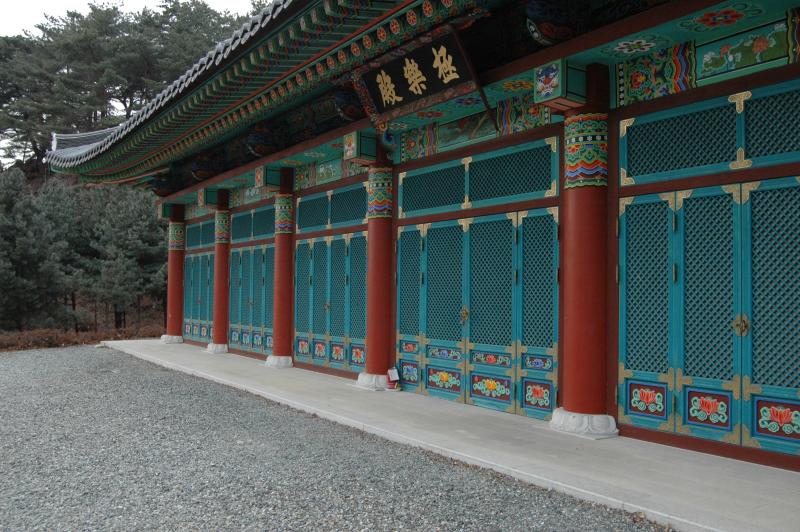
One of the other modern recreations (국락전) - it's completely closed, so I couldn't tell you what it's for specifically. By the size I'd guess it was a meditation hall.
Pagyesa is quite peaceful - definitely worth the uphill hike. Because of its relative unknown status, you're likely to be the only foreigner within a fair area. If headed to Palgongsan park, bear in mind the areas worth seeing are really spread out on the mountain. You really have to set out to see a specific site instead of just going to the general area.

Foreigner-friendly:

Convenience facilities:

(there's a Family Mart by the bus parking lot; once you're climbing the mountain there's very little)
Worth the visit:

 © Chris Backe - 2010
© Chris Backe - 2010This post was originally published on my blog, Chris in South Korea. If you are reading this on another website and there is no linkback or credit given, you are reading an UNAUTHORIZED FEED.
경주
National Museum of Korea
You can also be content with the knowledge that you're supporting the local economy more directly.
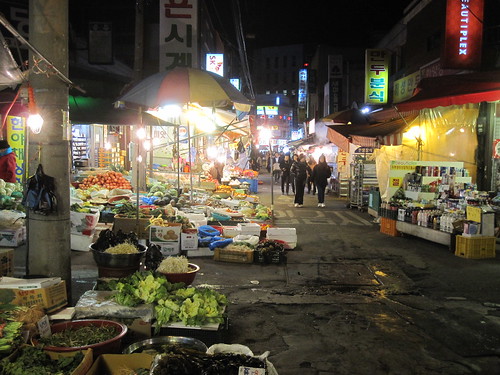
And it's nice to walk outside in the open air. When Homeplus is crowded, it becomes a nightmare just making it to the checkout. But when it gets busy in the markets, there's a more 'vibrant community'-type atmosphere to the occasion.
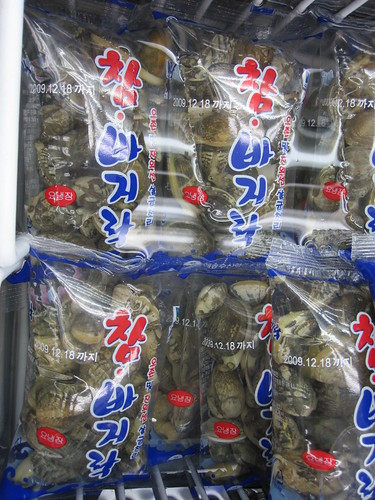
In Korea you can buy fresh cockles in a bag. I never paid them much attention until just the other day, when I noticed that they were still alive. They're sealed in with fresh seawater and you can see them happily filtering away sediment, oblivious to the gravity of their situation.
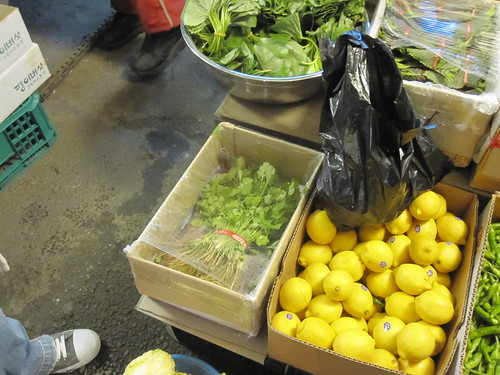
And this took a long time coming. The box in the middle has fresh coriander for sale, also known as cilantro. It's not very popular in Korea and is nearly as hard to find here as the mythical lime. The first time I ever ate it, I remember being a little turned off by the flavour. But over time I got used to it and now I can eat it with just about anything.
Apparently it's popularly disliked to the point where there are anti-coriander Haiku contests.
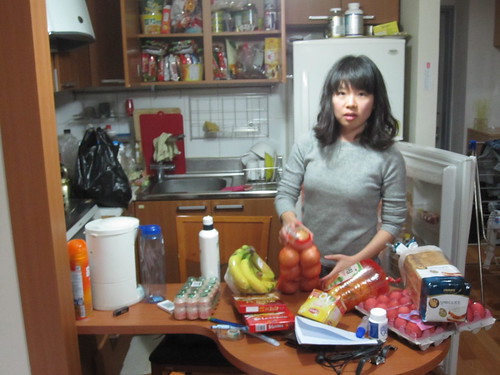
Our dormitory room now has noticeably more food than before I was married. There's something satisfying about coming home with a whole bunch of groceries and sorting it all out.
We eat breakfast together every morning and take turns to prepare it.
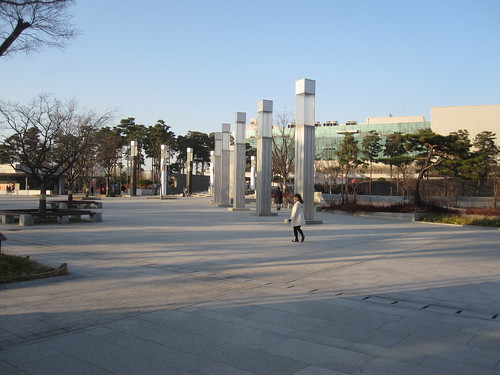
When my dad and brother were here last year, they visited the National Museum of Korea, which I hadn't been to. Heather and I decided we should go and check it out. It's right next to the Ichon subway station on line 4.
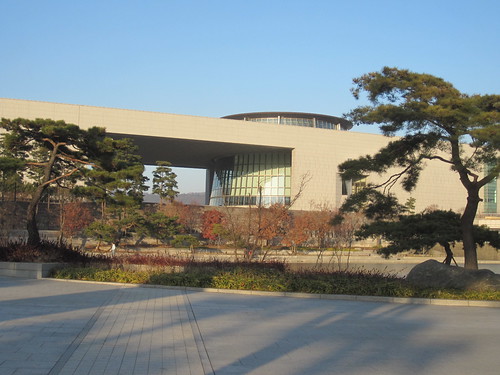
The building itself is quite nice, surrounded by native trees and a large pond. Behind the building is a good view of N Seoul Tower, which used to be called Namsan Tower.

The museum is large and it would take a full day to see everything on display. We walked around without much of a plan, beginning with the paleolithic era exhibits. The Korean peninsula has been inhabited since prehistoric times, with our early ancestors wielding stones like the ones in the photo above. They're called 'hand axes' and were probably used for meat-related applications.
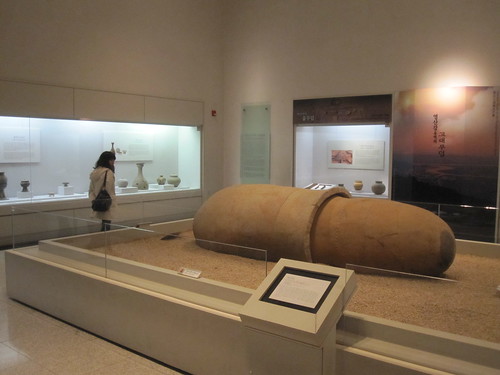
This cigar-shaped contraption is an example of an ancient stone coffin, which were only used by people who could afford them. The tombs of Korean nobles consisted of large mounds of earth, which later become covered with grass. The more important you were, the larger your mound would be.
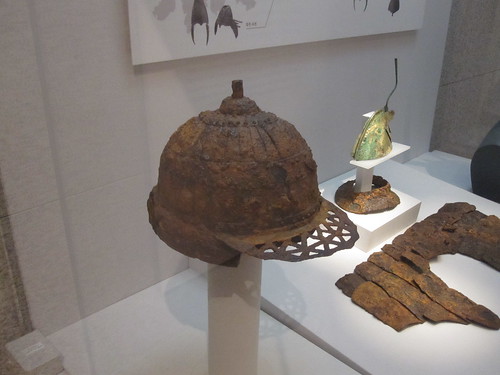
And I believe this is a bronze-age baseball cap. I've been trying to get into the sport, but it just doesn't have the same appeal for me as soccer or tennis.
But I do find the subtle tough-guy mannerisms of the baseball players on TV to be quite entertaining. They chew gum ferociously and never smile.

One of the highlights of the museum is this Shilla gold jewellery set, which was worn by members of the ruling dynasty. The belt has symbolic pendants hanging from it, and there are jade beads woven into the crown. It's considered one of the best examples of ancient Korean gold craftsmanship.
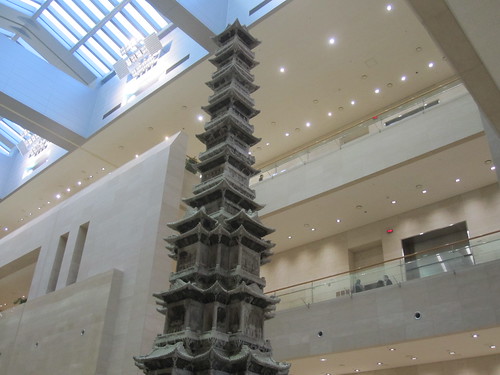
The building is large enough to accommodate this full-sized stone pagoda. I think it's an original, because there are visible signs of erosion on the lower levels. Each level of the pagoda symbolizes a higher state of consciousness.
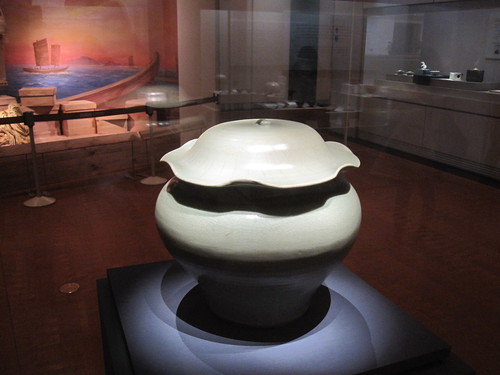
Most of the exhibits in the museum are pots or ceramics of some sort. Koreans were well-known for their expertise with celadon, and helped to spread the craft throughout Asia. Ceramics last for a long time, and you can see examples from every era in Korean history.

The museum itself isn't too bad. I'm not particularly interested in ceramics, which constitute about 90% of the exhibits. I'd recommend visiting the museum if you have a particular interest in Korean history, but otherwise there are plenty of other things to do in Seoul if you're on a tight schedule. The Korean Folk Village is probably a better option.
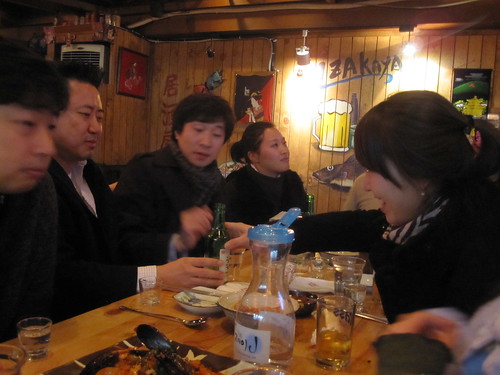
I haven't been able to go to Toastmasters much recently, due to a busy schedule. The last speech I gave was on Arisu, which is the name for Seoul city tap water. For those of you who are living in the city, the regular tap water in the vast majority of households is safe to drink. The government website has more information on the specifics. It tastes a little bit funny to begin with, but in the end it's healthier, cheaper and better for the environment than bottled water.
Give it a try sometime!
Korean Photoshop Disaster #3: Park Tae-hwan’s Babyface
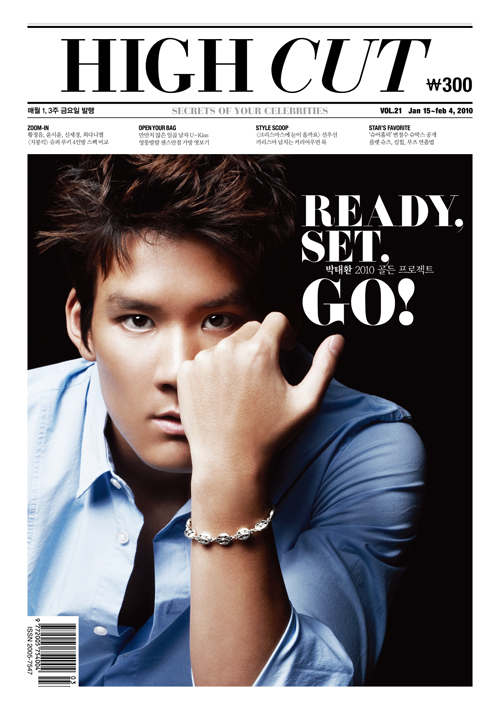 ( Source: High Cut )
( Source: High Cut )
Granted, it’s not the most egregious case of a Korean athlete’s face being photoshopped. That dubious honor still remains firmly in the hands of Gillette Korea, whose choice of pockmarked Manchester United footballer Park Ji-sung (박지성) to endorse them last year is probably also the most glaring example of the over-reliance on celebrities in Korean advertising too.
Unlike him though, youthful Olympic medalist Park Tae-hwan (박태환) already has unblemished and unusually smooth skin, which raises the question of what the photoshopping was for exactly?
Personally, it reminds me of the airbrushing of Milla Jovovich’s face in Resident Evil: Extinction (2007), which many viewers found unnecessary, confusing and/or distracting. Indeed, while I’ll be the first to admit that Tae-hwan has a great body (more of which you can see in the last post), and with the proviso that I’m a (jealous) heterosexual male, I’d say that in the second picture in the series his now somewhat seal-like face simply draws too much attention away from his abs…
Can anyone think of similar examples, particularly Korean ones? Please pass them on!
(For all posts in the Korean Photoshop Disasters series, see here)
Posted in Korean Men's Body Images, Photoshop Disasters Tagged: 박태환, 박지성, High Cut, 포토샾, 하이 컷, Park Ji-sung, Park Tae-hwan, Photoshop
jealousy
BEIRUT - St Apollonia from THE FLYING CLUB CUP
Uploaded by flyingclubcup.
I am more than a little jealous of anyone that actually got to witness this.
Question from a reader: DMZ tours
I have a question about DMZ tours. I have been trying to book myself and a visitor to Korea for the weekend of March 5-7th. I have contacted the USO and have been informed they are no longer conducting tours due to contractual disputes, and do not know when they will be back up and running.It may sound rather ironic that a travel writer focusing on Korea hasn't been to the DMZ; I also hadn't heard that the USO had stopped offering tours. To be honest, the DMZ doesn't hold my interest as a place to visit - and since it's such a widely visited tourist destination, I wouldn't have much to add to the myriad of stories or posts already out there. Call me blasé if you like, but it's so been done.
Would you have any information of a tour agency providing (cheap) tours to the DMZ the first weekend of March? I have only found very expensive tours.
Thanks!! I appreciate your help!
According to the USO's own website, the stoppage of tours is a '2 to 3 week pause' - perhaps giving them another try at the beginning of February will yield better results. Since tours with companies are offered daily, they're highly unlikely to be completely booked a month in advance. Just in case they're not up and running again, there are plenty of other places offering DMZ tours:
- Korea Travel Bureau - runs tours daily except Sundays - leaves 7:30 from Lotte Hotel - make reservations 2 days in advance at KNTO info center (02-753-9870) or the tour desk at Lotte Hotel (02-778-0150).
- Wow Corea Tour - http://www.wowcoreatour.com/main2.php?mode=01&anum=29 lists a few options, starting at 42,000 won. Call +82-02-739-3337 or e-mail [email protected] for more information.
- http://www.adventurekorea.com/ has offered DMZ trips periodically. Keep your eyes open there as well.
- Panmunjom Travel Center (02-399-2180) - 77,000 won; tours leave at 10:00 from the Panmunjom Co-op Center at Lotte Hotel
- Good Morning Tours (02-774-3226) - 78,000 won; tours leave at Lotte Hotel on weekdays or the Donghwa Duty Free Shop on weekends.
- Chung-Ang Express Tour (02-2266-3350)
- Global Tour (02-776-3153)
- Star Travel (02-569-8114)
- Grace Travel (AKA New Grace Tour in some older guidebooks) is listed on Life in Korea's website, and may be worth contacting.
- Your clothes - to make sure you don't end up in a North Korean propaganda photo, don't wear jeans, revealing shirts, sandals, t-shirt, sports wear, military clothes, etc. In other words, act like you're going to your boyfriend / girlfriend's church for the first time.
- Your camera - there will be places where you're allowed to take photos and places where you're not allowed to take photos. Stick with the program, follow the rules, yadda yadda yadda.
- Your passport - you'll need it. Keep it someplace safe while walking around, like a pocket.
- Your attitude - this is not the place to flout the rules. The rules are there because the guards on the other side have been standing there with a loaded weapon in their hands for waaaaaay too long, and would like nothing better than to shoot someone breaking the rules. You will be told the rules - probably more than once - so follow them. You'll be told not to talk to or approach the North Korean soldiers. With all the headlines coming out of North Korea, I seriously doubt you want to be that person that starts an international incident. You're not going to cause any change in your half-day tour, so simply smile, follow the rules, and thank the men and women who serve in such a high-strung area.
To get to the Lotte Hotel, take line 2 of the Seoul subway system to the Euljiro-1-ga station. Take exit 8 to street level, then look left. If coming from City Hall Station (lines 1 and 2), take exit 6, then turn right. At the fork, bear left, then walk 150 meters and turn right. Lotte Hotel will be on your right.
Anybody made a trip to the DMZ? Advice, ideas, comments?
 © Chris Backe - 2010
© Chris Backe - 2010This post was originally published on my blog, Chris in South Korea. If you are reading this on another website and there is no linkback or credit given, you are reading an UNAUTHORIZED FEED.



 RSS Feed
RSS Feed
Recent comments